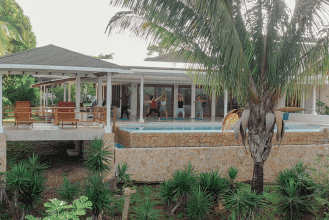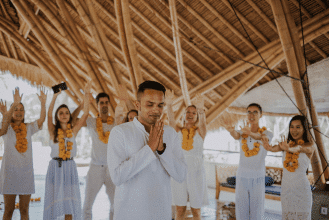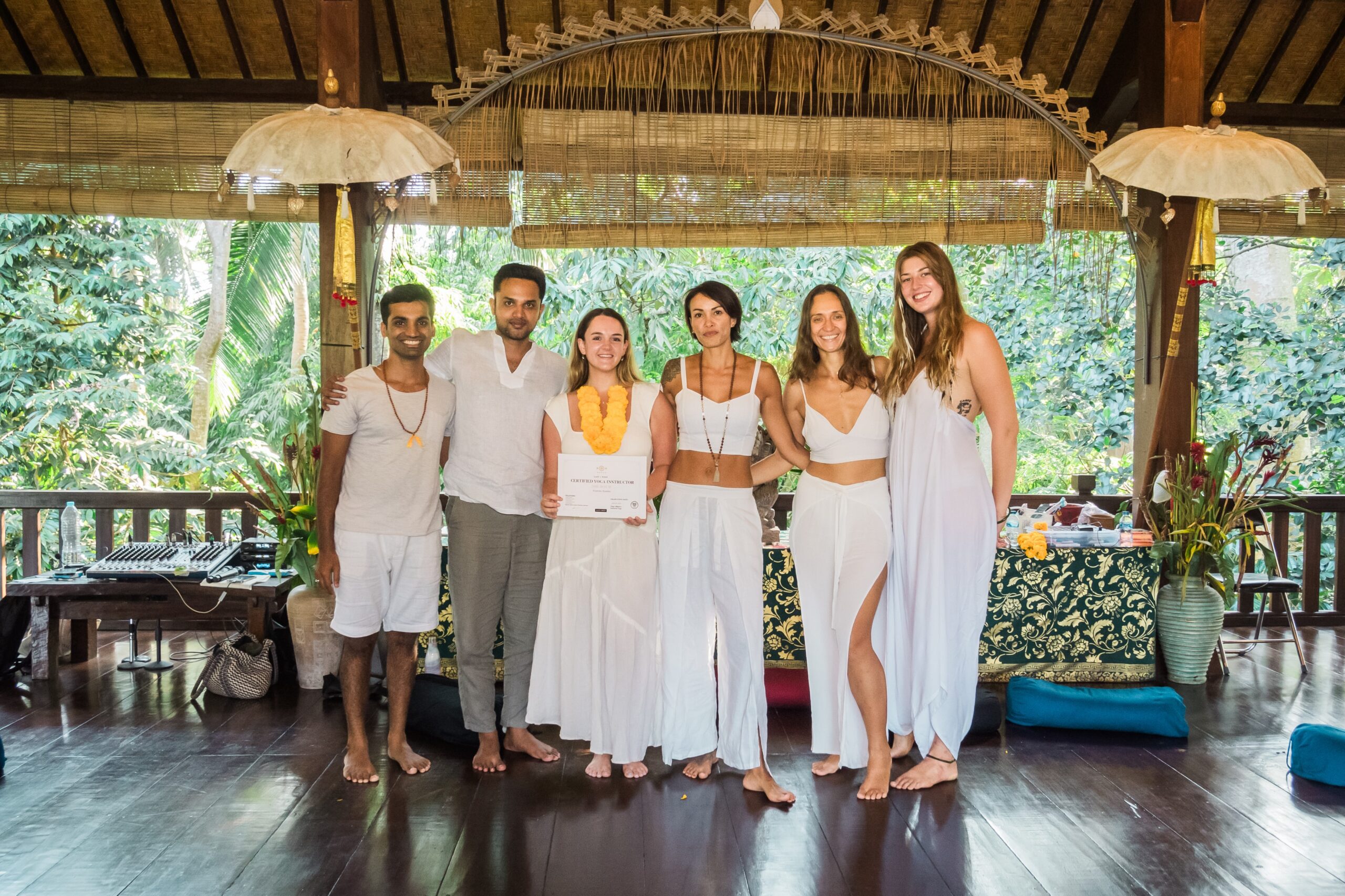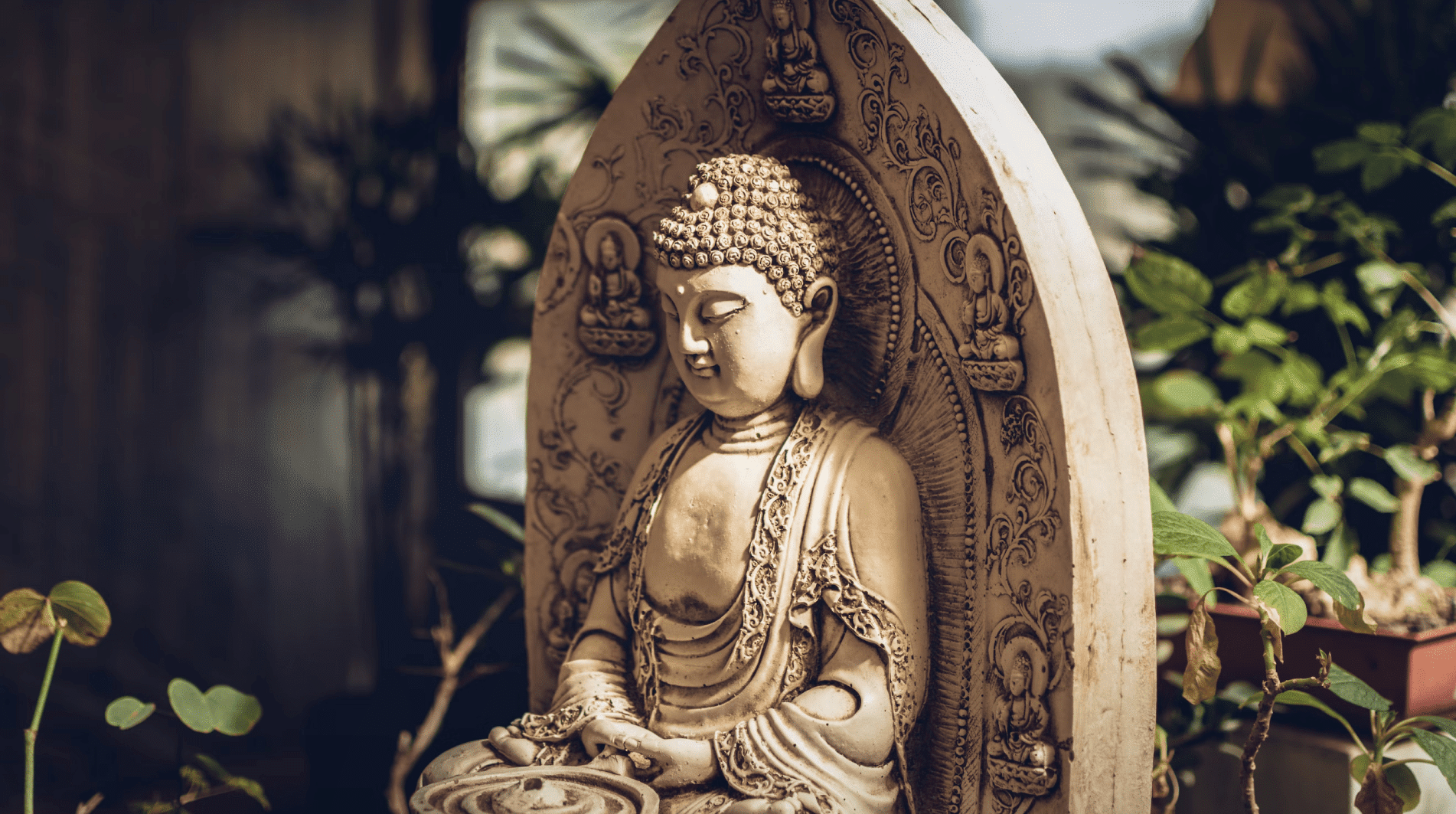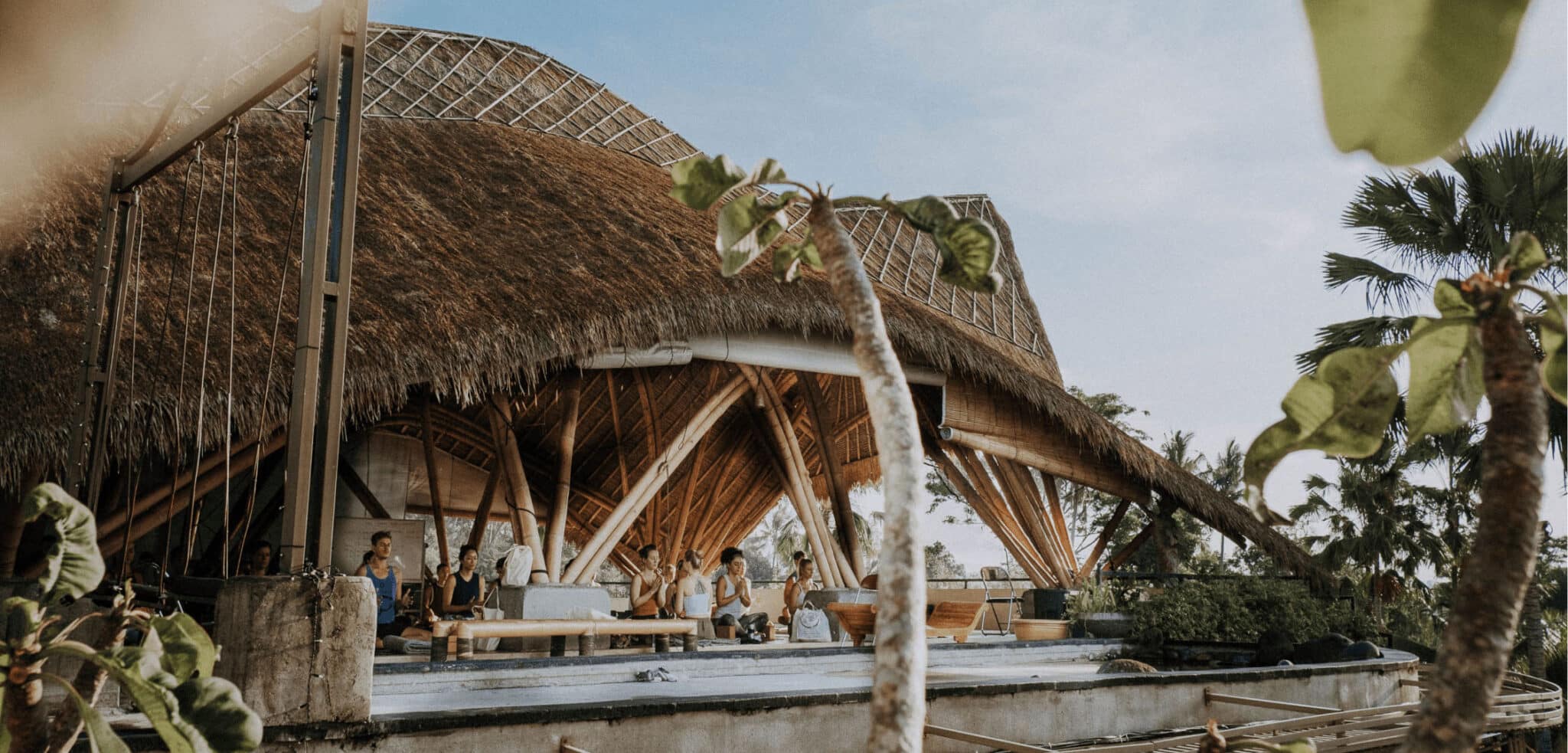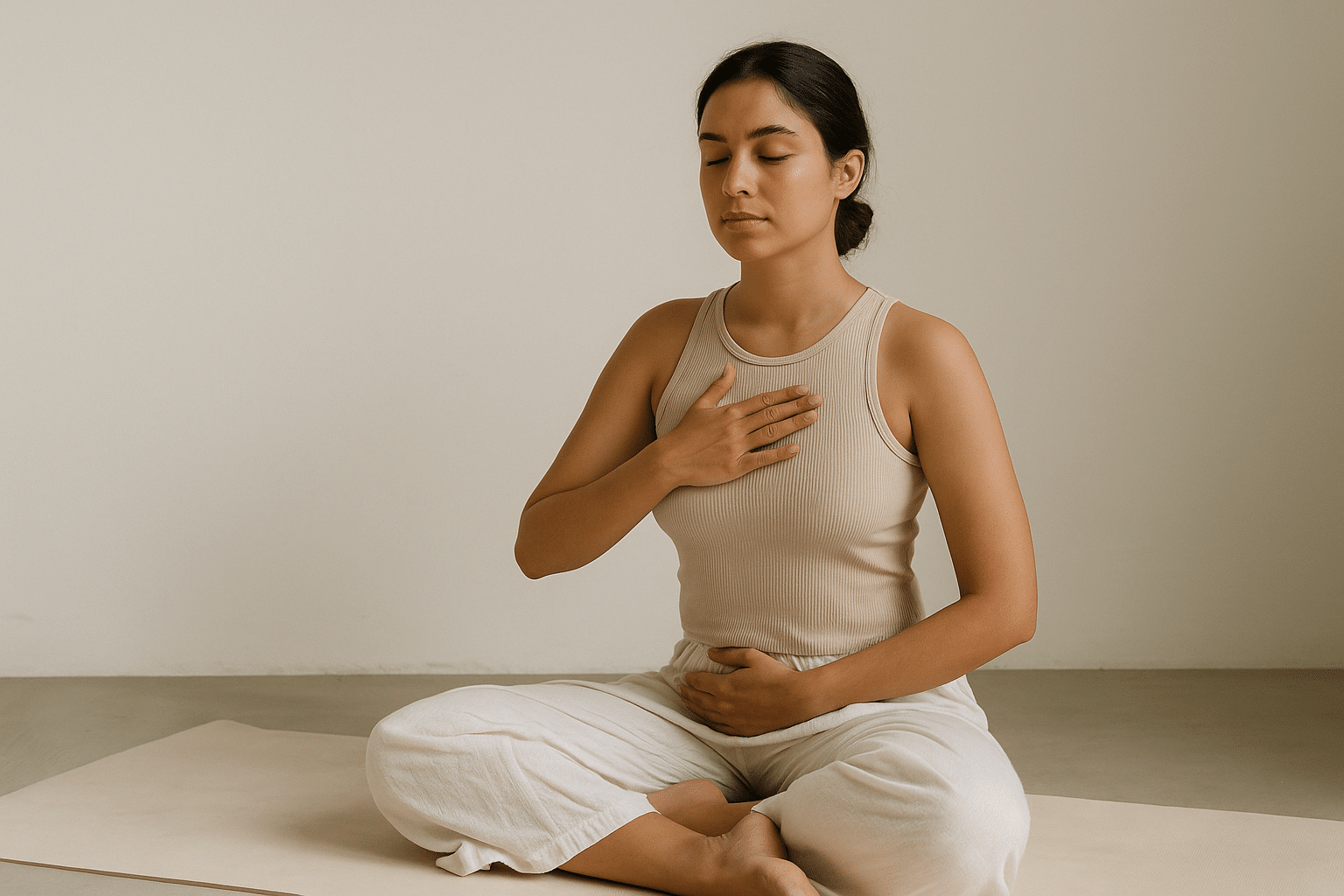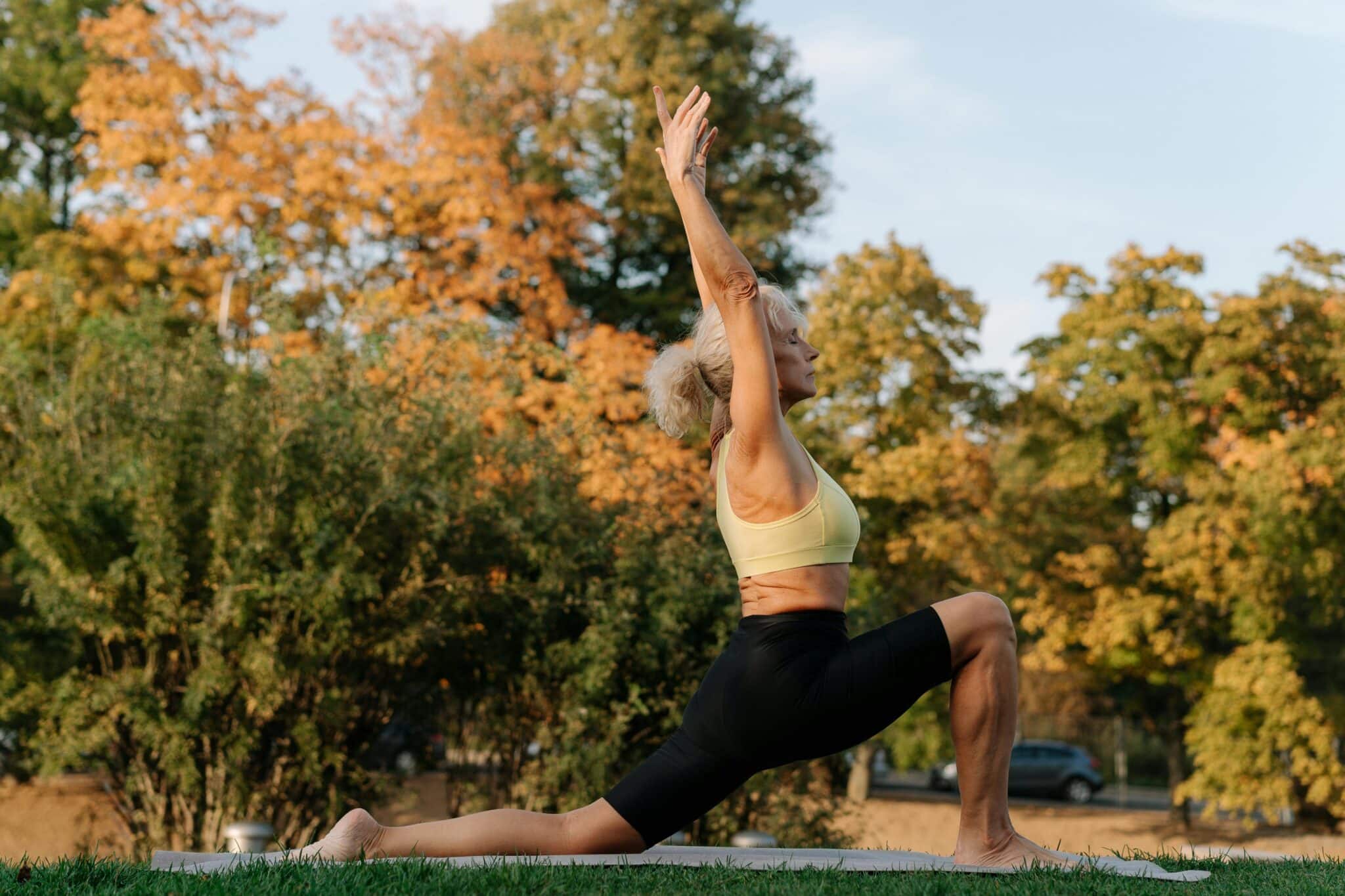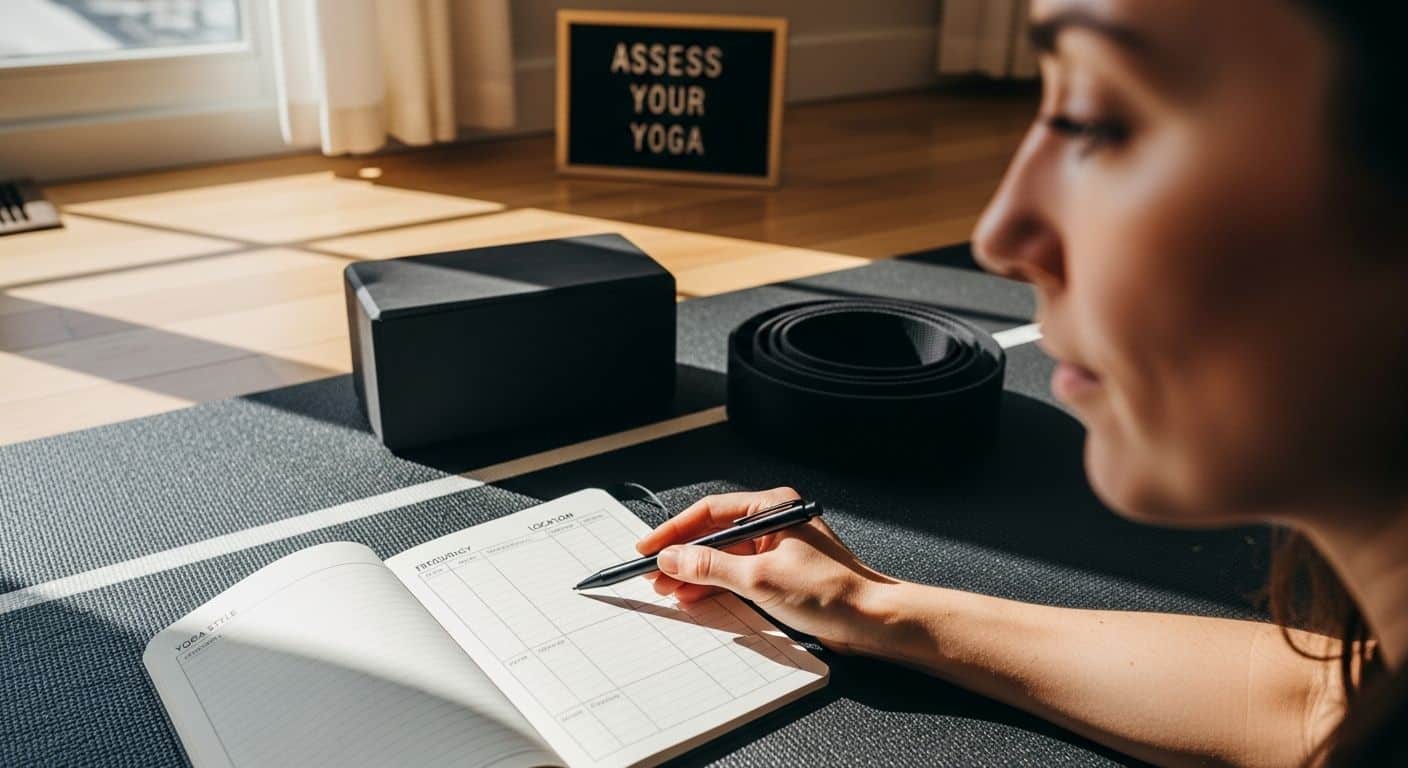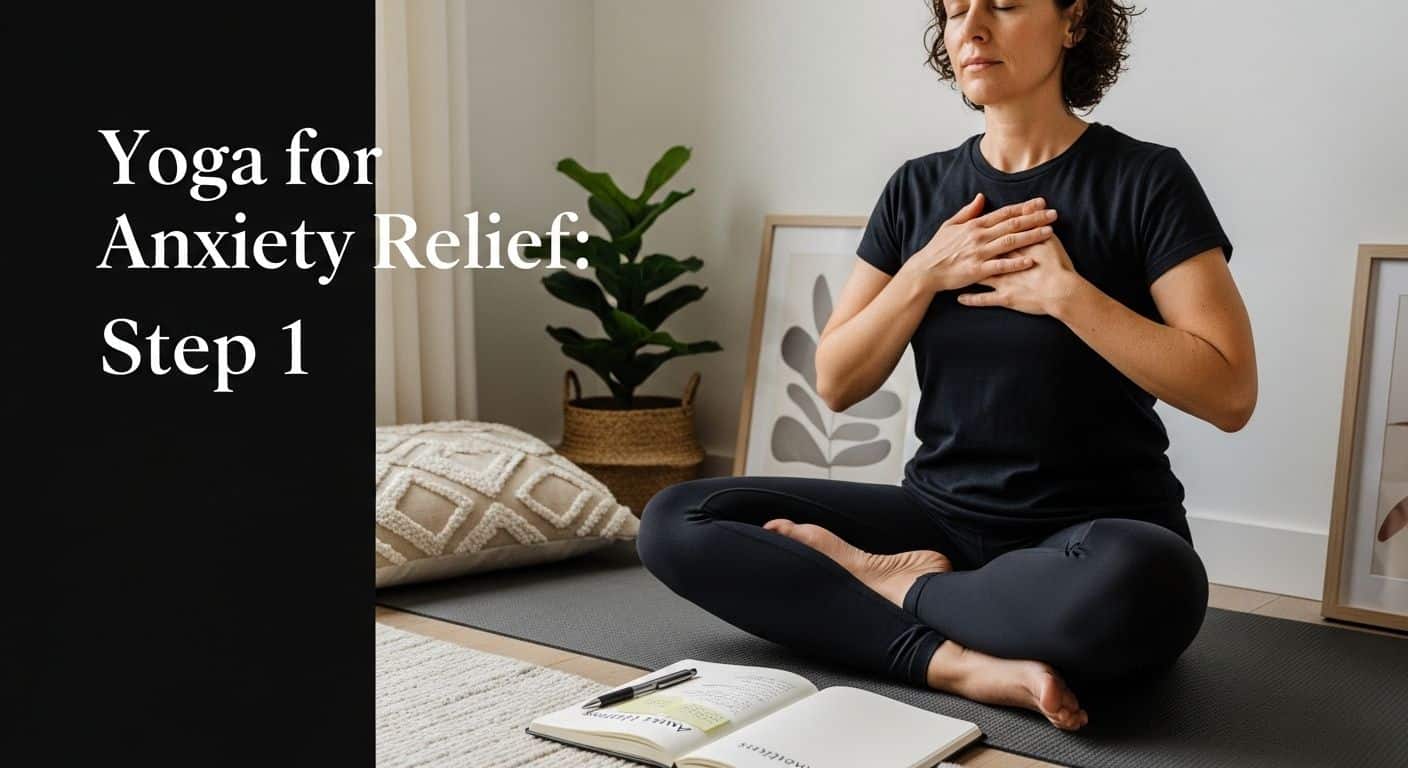
Trying yoga for anxiety sounds simple enough. Yet about 40 million adults in the US struggle with anxiety every year, and many find that generic relaxation methods just do not stick. You might think lighting a candle or stretching for a few minutes could be the answer. Turns out, the secret is building a practice that is custom-fit to your own unique triggers and goals.
Table of Contents
- Step 1: Identify Your Personal Triggers And Goals
- Step 2: Create A Comfortable And Calming Space
- Step 3: Select Appropriate Yoga Poses For Anxiety Relief
- Step 4: Establish A Consistent Practice Routine
- Step 5: Monitor Progress And Evaluate Outcomes
Quick Summary
| Key Point | Explanation |
|---|---|
| 1. Identify anxiety triggers and goals | Understanding personal anxiety helps tailor your yoga practice to effectively address your emotional needs. |
| 2. Create a calming practice space | A dedicated, serene environment enhances relaxation and focus during yoga, crucial for managing anxiety. |
| 3. Choose appropriate yoga poses | Select grounding and restorative poses to help regulate emotions and relieve anxiety symptoms. |
| 4. Establish a consistent routine | Regular practice fosters emotional stability; choose a realistic schedule that fits your lifestyle. |
| 5. Monitor progress and adjust practices | Track your emotional state to identify effective techniques and make necessary adjustments for optimal relief. |
Step 1: Identify Your Personal Triggers and Goals
Embarking on a yoga journey for anxiety relief requires more than just rolling out a mat. Understanding your unique anxiety landscape is the foundational first step toward creating a meaningful and transformative practice. Your personal anxiety triggers are as individual as your fingerprint, and recognizing them allows you to design a targeted yoga approach that speaks directly to your emotional and physiological needs.
Starting this process begins with honest self-reflection. Set aside quiet time to document your anxiety patterns. What specific situations, thoughts, or physical sensations typically spark your anxious responses? Some individuals might notice workplace pressures trigger their anxiety, while others experience heightened stress during social interactions or when facing uncertain circumstances. Grab a journal and spend 15-20 minutes writing down detailed observations about your anxiety experiences.
As you map out your anxiety landscape, start categorizing these triggers into manageable groups. Are they primarily emotional responses, physical manifestations, or situational reactions? This categorization helps you develop a more nuanced understanding of your anxiety’s root causes. Learn more about personal transformation techniques that can support this introspective process.
Next, establish clear, realistic goals for your yoga practice. Your objectives might range from reducing overall stress levels to managing specific anxiety symptoms like rapid heartbeat or racing thoughts. Create goals that are specific, measurable, and achievable. Instead of a vague goal like “reduce anxiety,” consider something more concrete such as “practice 20 minutes of targeted yoga breathing techniques three times weekly” or “develop a morning routine that helps me feel centered before work.”
Verification of successful goal setting includes:
- Clearly written anxiety triggers
- Specific yoga practice objectives
- Identified emotional and physical anxiety patterns
- Realistic, time-bound goals aligned with your personal capacity
Remember, this initial step is about gaining clarity and creating a personalized roadmap. Your yoga for anxiety relief journey is unique, and these initial insights will guide your subsequent practice development with precision and intention.

Step 2: Create a Comfortable and Calming Space
A serene environment is not just a luxury but a fundamental requirement for effective yoga practice, especially when managing anxiety. Your practice space becomes a sanctuary of healing and self-discovery, transforming from a mere physical location into a therapeutic zone that supports emotional regulation and inner peace.
Begin by selecting a dedicated area in your home that feels naturally quiet and undisturbed. This doesn’t require a massive space just a corner that can become your personal wellness retreat. Look for an area with minimal external noise and preferably some natural light. If possible, choose a spot near a window where soft daylight can gently illuminate your practice, creating a warm and inviting atmosphere.
Prepare your space with intentional, mindful elements that promote relaxation. Soft, neutral-toned yoga mats work well for creating a calm visual landscape. Consider adding minimal but meaningful decor like a small plant, a soft throw blanket, or a simple artwork that brings a sense of tranquility. Explore our guide on personal yoga transformation to understand how your environment can support your inner journey.
Temperature and air quality significantly impact your practice. Ensure the room feels comfortable aim for a temperature between 68-72 degrees Fahrenheit. Open windows briefly before your session to circulate fresh air, or use a small fan for gentle air movement. Soft, natural ventilation can help create a sense of openness and prevent the space from feeling stagnant.
Scent can be a powerful tool in creating a calming environment. Consider using subtle, natural aromatherapy like lavender essential oil or gentle herbal diffusers. The key is subtlety avoid overwhelming fragrances that might distract from your practice. A light, natural scent can help signal to your nervous system that this is a space of relaxation and healing.
Verification checklist for your calming yoga space:
- Quiet, dedicated area selected
- Minimal external distractions
- Soft, neutral yoga mat in place
- Calming decor elements added
- Comfortable room temperature (68-72 degrees)
- Gentle, natural air circulation
- Subtle, non-intrusive aromatherapy
Remember, creating your yoga space is a personal and intuitive process. Trust your sensory responses and make adjustments that feel right for you. Your environment should feel like a gentle embrace, supporting your journey toward anxiety relief and inner peace.
Below is a practical checklist to help you set up a calming yoga space for anxiety relief, summarizing all key elements you should prepare and what to check for optimal results.
| Element | What to Prepare | Checklist/Verification |
|---|---|---|
| Practice Area | Quiet, dedicated space | Minimal distractions present |
| Yoga Mat | Soft, neutral-toned mat | Comfortable and calming color |
| Decor | Plant/blanket/artwork | Adds tranquility, not clutter |
| Temperature | Room at 68-72°F | Feels comfortable and inviting |
| Air Quality | Fresh air or gentle fan | Room is well-ventilated |
| Scent | Subtle aromatherapy (lavender) | Scent is light, not overpowering |
| Lighting | Natural/soft lighting | No harsh glare or deep shadows |
Step 3: Select Appropriate Yoga Poses for Anxiety Relief
Selecting the right yoga poses for anxiety relief is a nuanced process that goes beyond simply stretching your body. Your yoga practice becomes a targeted intervention for emotional regulation, transforming physical movement into a powerful tool for calming your nervous system. Understanding which poses specifically address anxiety requires thoughtful selection and intentional practice.
Begin with gentle, grounding poses that help reconnect you with your body and interrupt anxious thought patterns. Child’s Pose and Mountain Pose are excellent starting points, offering a sense of safety and stability. These foundational postures help reset your nervous system by encouraging slow, deliberate breathing and creating a physical sense of groundedness. Explore our comprehensive guide on root chakra yoga poses to understand how certain postures can enhance emotional stability.
Progressively incorporate forward bends and gentle twists, which are particularly effective for anxiety management. Poses like Standing Forward Bend and Seated Spinal Twist help release tension stored in the body and stimulate the parasympathetic nervous system. These movements work by physically and energetically creating space between your thoughts and bodily sensations, allowing for a more regulated emotional state.
Restorative poses play a critical role in your anxiety relief practice. Poses such as Legs-Up-the-Wall and Supported Corpse Pose activate the body’s relaxation response, signaling to your nervous system that you are safe. These postures encourage deep, diaphragmatic breathing and help interrupt the fight-or-flight response characteristic of anxiety. Practice these poses with supportive props like bolsters or folded blankets to enhance comfort and promote complete relaxation.
Verification checklist for your yoga pose selection:
- Identified 3-5 grounding poses
- Included gentle forward bends and twists
- Incorporated at least two restorative poses
- Poses selected match personal anxiety triggers
- Comfortable with basic alignment and breathing techniques
Remember that yoga for anxiety is not about perfection but about creating a compassionate, healing practice. Listen to your body, move slowly, and allow each pose to be an opportunity for emotional processing and nervous system regulation. Your practice is a personal journey of healing and self-discovery.

Step 4: Establish a Consistent Practice Routine
Consistency transforms yoga from a sporadic activity into a powerful therapeutic tool for anxiety relief. Your practice becomes most effective when it becomes a rhythmic, integrated part of your daily life, creating a predictable sanctuary of calm amidst life’s unpredictability. Establishing a routine is not about perfection but about creating a sustainable, compassionate approach to your emotional well-being.
Start by selecting a time of day that feels most natural and least disruptive to your existing schedule. Morning practitioners often find that yoga sets a centered tone for the entire day, while evening practitioners appreciate how the practice helps release accumulated daily stress. Choose a time when you are least likely to encounter interruptions. This might mean waking up 30 minutes earlier or practicing immediately after work before evening responsibilities begin.
Commit to a realistic frequency that matches your current lifestyle. Learn more about personal transformation through consistent practice, understanding that sustainable change happens through gentle, persistent effort. For most individuals managing anxiety, three to four 20-30 minute sessions per week provide significant benefits. This approach prevents overwhelm while still delivering meaningful neurological and emotional regulation.
Design a flexible yet structured routine that includes a consistent sequence of poses, breathing techniques, and brief meditation. Your routine might start with five minutes of gentle breathing, followed by your selected anxiety-relief poses, and conclude with a short relaxation period. Having a predictable framework reduces decision fatigue and makes your practice feel more approachable.
Consider using a simple yoga mat, timer, or meditation app to support your routine and provide gentle structure.
Address potential obstacles proactively. Life happens, and there will be days when your full practice feels challenging. On those days, commit to at least a 10-minute practice or even just five minutes of conscious breathing. The goal is maintaining momentum, not achieving perfection. Treat your practice like a compassionate friend who understands your limitations and celebrates your efforts.
Verification checklist for establishing your practice routine:
- Selected consistent practice time
- Defined realistic weekly practice frequency
- Created a basic pose and breathing sequence
- Identified backup strategies for challenging days
- Prepared necessary minimal equipment
Remember that building a yoga routine for anxiety relief is a journey of self-compassion. Each time you return to your mat, you’re reinforcing your commitment to emotional healing and personal growth.
Step 5: Monitor Progress and Evaluate Outcomes
Tracking your yoga journey for anxiety relief transforms practice from a passive experience into an active, empowering process of self-discovery. Monitoring progress is not about achieving perfection but understanding your unique emotional landscape and celebrating incremental improvements in your mental well-being.
Begin by establishing a personal anxiety tracking system. A dedicated journal works beautifully for this purpose, allowing you to record not just your physical practice but your emotional responses. Before starting your yoga routine, rate your anxiety levels on a simple 1-10 scale. After each session, record how you feel, noting any shifts in your mental state, physical tension, or emotional reactivity. Explore our guide on personal transformation techniques to enhance your self-reflection process.
Utilize standardized self-assessment tools to bring objectivity to your tracking. The State-Trait Anxiety Inventory provides a structured approach to measuring your anxiety levels. Complete this assessment monthly to generate a quantitative record of your progress. Digital apps and online platforms can help streamline this process, offering graphical representations of your emotional shifts over time. The key is consistency create a ritual around your tracking that feels supportive rather than judgmental.
Pay attention to subtle, qualitative changes beyond numerical metrics. Notice how your body responds to stress, your breathing patterns during challenging moments, and your overall resilience. Are you finding it easier to pause and breathe before reacting? Do you feel more spacious between your thoughts? These nuanced shifts are often more meaningful indicators of progress than any standardized score.
Be prepared to adapt your practice based on your observations. If certain poses or breathing techniques consistently help reduce your anxiety, incorporate more of them. Conversely, if some practices feel less effective, give yourself permission to modify or replace them. Your yoga journey is a dynamic, evolving process of self-care and emotional regulation.
Verification checklist for monitoring your anxiety relief progress:
- Established a consistent tracking method
- Completed monthly self-assessment
- Recorded qualitative emotional shifts
- Identified most effective yoga techniques
- Demonstrated willingness to adjust practice
Remember that progress in managing anxiety is rarely linear. Some weeks will feel more challenging than others, and that’s completely normal. Your yoga practice is a compassionate companion on your journey, offering support and insight with each mindful breath and movement.
Here is a quick reference checklist to monitor your yoga progress for anxiety relief, capturing tracking methods, assessment frequency, qualitative markers, and adaptation strategies discussed in this guide.
| Progress Monitoring Area | What to Use/Do | How to Verify/Adapt |
|---|---|---|
| Personal Tracking System | Journal or digital log | Consistent entries before/after sessions |
| Anxiety Rating | 1-10 scale—rate before and after each session | Notice changes in scores over time |
| Standard Assessment | State-Trait Anxiety Inventory (monthly) | Review trends in quantitative scores |
| Qualitative Changes | Reflect on emotional, physical responses | Note ease of breathing, reaction shifts |
| Effective Technique Identification | Note which poses/breathing offer most relief | Increase use of what works best |
| Practice Adaptation | Adjust practice based on what feels effective | Make changes to poses, timing, sequence |
Turn Anxiety Relief Into Lasting Transformation
You have started identifying your anxiety triggers and are seeking real, long-term change through yoga. The steps you explored—like building a calming space, choosing the right poses, and setting a steady routine—are powerful foundations. But for many, true progress means moving beyond solo practice and gaining skills from authentic experts. If you want to deepen your understanding and truly master yoga for anxiety relief, immersive guidance makes all the difference.

Step into a supportive community and receive direct mentorship from seasoned instructors. With Yoga East West’s immersive teacher training programs, you’ll not only gain in-depth knowledge of asanas, breathwork, and meditation for anxiety relief, but also join a transformative environment designed for holistic personal and professional growth. Whether you are new to yoga or ready to teach others, our luxury trainings in Bali, Costa Rica, and Thailand guide you far beyond the basics.
Ready to elevate your emotional well-being and become confident in guiding yourself or others through powerful anxiety-relief techniques? Begin your journey today by exploring Yoga East West and see how high-quality, yoga alliance-accredited training can accelerate your growth. Spots fill quickly for our upcoming courses. Take the next step now for lasting peace and confidence.
Frequently Asked Questions
What are the first steps to starting a yoga practice for anxiety relief?
Begin by identifying your personal anxiety triggers and setting realistic goals for your practice. Reflect on your anxiety patterns and categorize them to understand your emotional landscape better.
How can I create a calming space for my yoga practice?
Select a dedicated area in your home that is quiet and free from distractions. Incorporate soft lighting, soothing decor, and gentle scents like lavender to create a relaxing environment.
What types of yoga poses are best for alleviating anxiety?
Gentle, grounding poses like Child’s Pose and Mountain Pose, as well as restorative poses such as Legs-Up-the-Wall and Supported Corpse Pose, are particularly effective for reducing anxiety and promoting relaxation.
How should I establish a consistent yoga routine for anxiety relief?
Choose a specific time of day for your practice that fits into your schedule and commit to a realistic frequency, such as three to four sessions per week. Create a simple routine that includes breathing techniques and a sequence of chosen poses.

